Contents
>>>>>
- The Indus Valley Civilization forms a part of the proto-history of India.
- It belongs to the Bronze Age.
- Indus Valley Civilization is older than Chalcolithic civilizations.
- In many ways it was far more developed than settlements in the Chalcolithic Age or Copper Age.
>>>>>
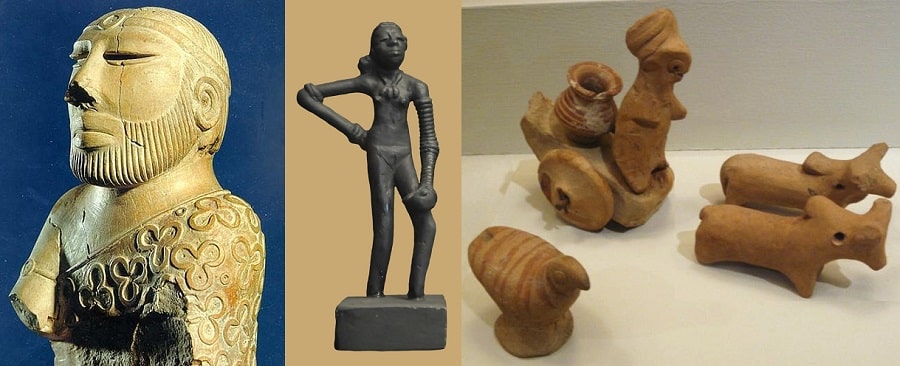
>>>>>>
Phases of the Indus Valley Civilization
- The Harappan civilization can be classified into 3 phases
- Pre-Harappan phase – 3200 to 2600
- Mature Harappan phase – 2600 to 1900
- Late Harappan or declining phase – 1900 to 1300 BC
- Pre-Harappan civilization has been found at Mehrgarh near Bolan Pass Balochistan, Pakistan.
>>>>>>
>>>>>>
Area of the Indus Valley Civilization
- 1,400 settlements of this civilization have been discovered so far.
- Those are distributed over a very wide geographical area, almost
- East to west – 1,600 km
- North to south – 1,400 km
- Harappan civilization extent starts from
- West – Sutkagendor (Baluchistan)
- East – Alamgirpur (Meerut, Uttar Pradesh)
- North – Manda (Akhnoor, J&K)
- South – Daimabad (Ahmadnagar, Maharashtra)
- The total geographical stretch of Harappan civilization is about 1,250,000 sq. km
- It was more than 20 times the area of Egyptian and more than 12 times of the combined area of Egyptian and Mesopotamian civilizations.
- Mostly, the Harappan settlements were located on river banks.
- Only 40 settlements were located on the Indus and its tributaries.
- 1,100 (80%) settlements were located on the vast plain between the Indus and the Ganga, comprising mainly the Saraswati river system (no more exist).
>>>>>
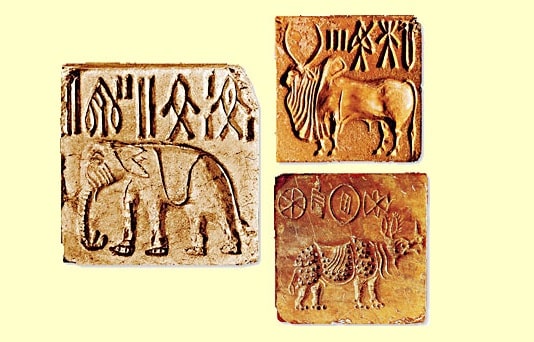
>>>>>>
Indus Valley Sites – North to South
India | Pakistan | Afghanistan |
J&K
>>>>Punjab
>>>>Haryana
>>>>UP
>>>>Rajasthan
>>>>Gujarat
>>>>Maharashtra
>>>> | Punjab
>>>> Balochistan
>>>> Sindh
>>>> Balochistan
| Takhar
>>>> Kandahar
|
>>>>>
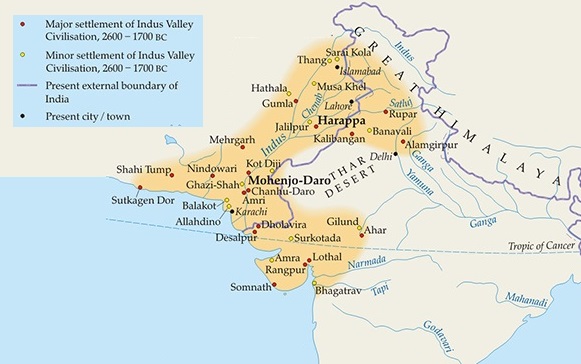
>>>>>>
Indus Valley Sites in India
Kalibangan
- Modern location – Hanumangarh, Rajasthan
- River banks – Ghaggar-Hakra River
- Discovered by Luigi Pio Tessitori
- Known as 3rd capital of Indus Empire.
- Major findings
- World’s earliest ploughed field – wooden plough
- Evidence of irrigation
- Massive brick wall around both citadel and lower town
- Decorative bricks used in flooring only at this city
- Did not have a drainage system
- Fire Altars
- Bones of camel
- Horse remains (IVC people didn’t use horses)
- Copper ox
- Shiva Lingam
- Evidence of earthquake
- Pre and mature Harappan civilization
>>>>>>
Lothal
- Modern location – Ahmedabad District, Gujarat
- River banks – Bhogava & Sabarmati river confluence
- Discovered by S. R. Rao (ASI) in 1954.
- Major findings
- World’s earliest known dockyard and port
- House had front entrance (exception)
- The lower part of the city was walled
- Earliest cultivation of rice – remains of rice husks
- Evidence of double burial (male and female together)
- Ivory weight balance & ivory scale
- Seal from Mesopotamia found here
- Terracotta model of ship has been found
- Copper dog
- Bead making factory
>>>>>>
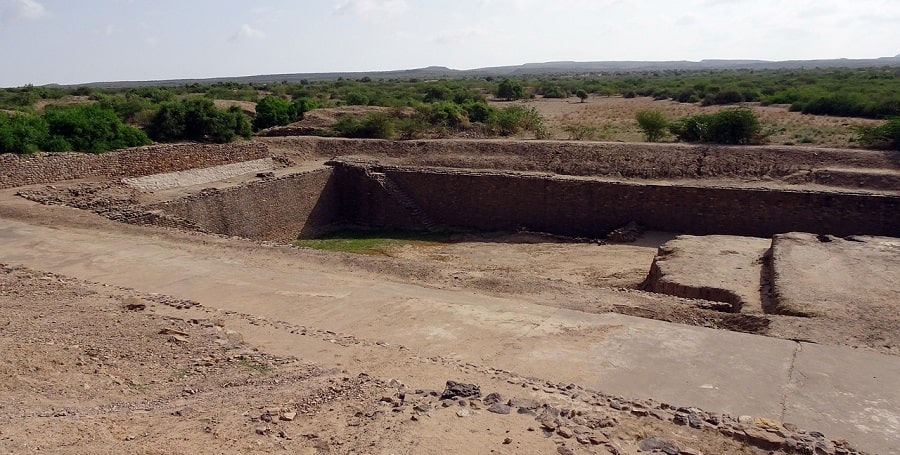
Dholavira
- Modern location – Kutch, Gujarat
- Discovered by J. P. Joshi (ASI) in 1967-68
- 5th largest site of Indus Valley Civilization and 2nd in India.
- Dholavira located on the Tropic of Cancer
- Major findings
- Only site to be divided into 3 parts.
- Water harnessing system
- Giant water reservoir, Dams, Embankments
- A stadium
- Rock-cut architecture, use of rocks for constructions
- Large-scale use of sandstone along with mud brick.
- Large letters of the Harappan script (sign boards).
- Shows all three phases of Harappan Culture.
>>>>>>
Rangpur
- Modern location – Saurashtra, Gujarat
- River banks – Madar River
- Discovered by ASI in 1931
- Major findings
- Evidence of Rice
- Remains of pre-Harappan and Mature Harappan culture
- Yellow and grey color pots of pre-Harappan people
- Flakes
>>>>>>
Surkotada
- Modern location – Kutch, Gujarat
- Discovered by J. P. Joshi (ASI) in 1964
- Major findings
- Bones of a horse
- Stone covered grave
>>>>>>
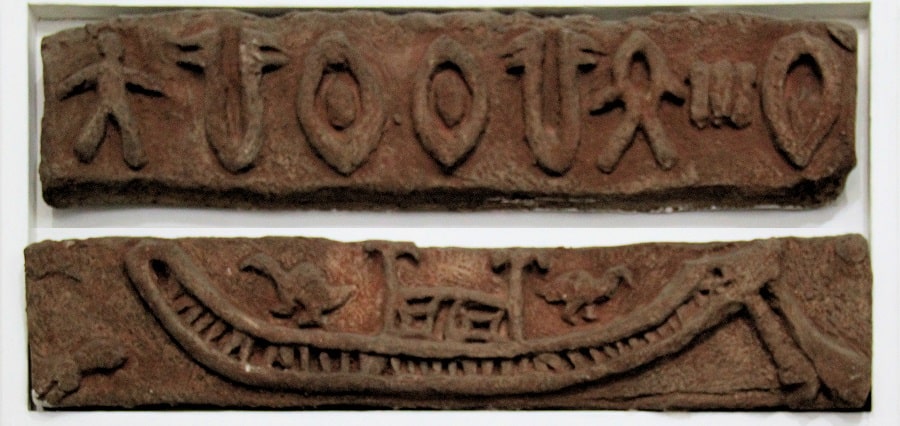
>>>>>>
Ropar
- Modern location – Rupnagar, Punjab
- River banks – Sutlej river
- Major findings
- Dog buried with humans.
- Buildings made of stone and soil
>>>>>>
Banawali
- Modern location – Fatehabad, Haryana
- River banks – Sarasvati river
- Discovered by R.S. Bisht (ASI)
- Major findings
- Barley Cultivation.
- Oval shaped settlement.
- Only city with radial streets.
- Toy terracotta models of plough.
- Centre of pre, Mature and Late Harappan civilization.
>>>>>>
Rakhigarhi
- Modern location – Hisar, Haryana
- River banks – Sarasvati & Ghaggar river
- Discovered by ASI in 1963
- The largest Indus Valley Civilization site, almost 350 hectares
- Major findings
- Shows all three phases of Harappan Culture
- Female figure similar to the Mohenjodaro ‘dancing girl’.
>>>>>>
Balu
- Modern location – Kaithal, Haryana
- Major findings
- Earliest evidence of garlic
- Remains of rice
>>>>>>
Daimabad
- Modern location – Ahmadnagar, Maharashtra
- River banks – Pravara River
- Discovered by B. P. Bopardikar in 1958
- Southernmost site of Indus Valley Civilization
- Major findings
- Sculpture of bronze buffalo
- Sculpture of a bronze chariot
- Sculptures contain arsenical alloying
- Late-Harappan culture
>>>>>>
Manda
- Modern location – Jammu, J&K
- River banks – Chenab River
- Situated in the foothills of Pir Panjal range
- Northernmost site of Indus Valley Civilization
- Major findings
- This site was established to procure wood
>>>>>>
Alamgirpur
- Modern location – Meerut, UP
- River banks – Yamuna River
- Discovered by Punjab University in 1974.
- Easternmost site of Indus Valley Civilization
- Major findings
- Impression of cloth on a trough
- Late-Harappan culture
>>>>>>
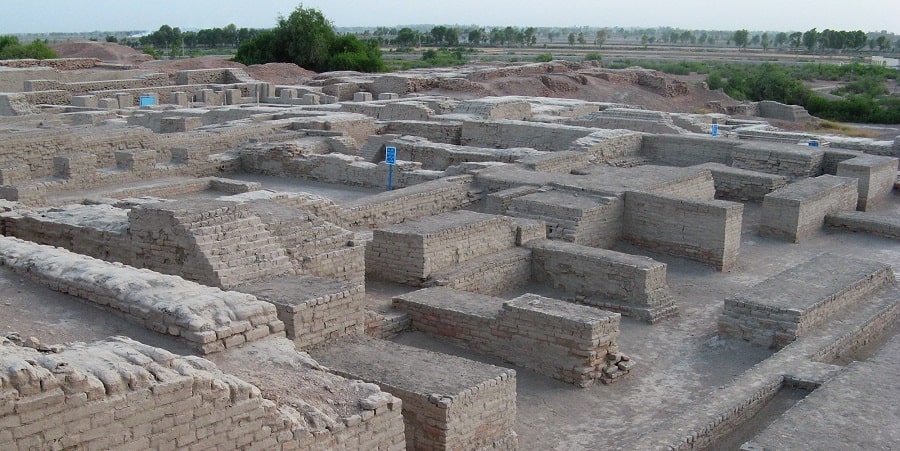
>>>>>>
Indus Valley Sites in Pakistan
Harappa
- Modern location – Montgomori, Punjab
- River banks – Ravi river
- Discovered by – Dayaram Sahni in 1921
- Charles Mason first noticed the ruins of Harappa in 1826.
- Major findings
- Seals made out of stones
- Two rows of six granaries outside the fort
- Coffin burial & Graveyard
- Single room barracks
- Two red stone idols of dancing girl
- Naked bust of male, female genitalia
- Evidence of direct trade with Mesopotamia
>>>>>>
Mohenjodaro
- Modern location – Larkana, Sindh
- River banks – Indus river
- Discovered by – R. D. Banerji (ASI) in 1922
- Mohenjodaro means ”Mound of the dead Men”.
- 2nd largest site of Indus Valley Civilization, almost 300 hectares
- Major findings
- Suddenly destructed by flood or invasion – discovery of human skeletons together
- Great Bath and Great Granary
- Multi-pillared assembly Hall
- College of Priests
- Man with Beard / Priest king statue
- Bronze dancing girl
- Pashupati seal
- Ivory weight balance
- Shell scale
- Piece of woven cotton cloth
- Bangles of clay
- Superficial evidence of Horse
- Evidence of ship/big boat
- Domestication of chickens
- Cylinder seals of the Mesopotamia
>>>>>>
Chanhudaro
- Modern location – Sindh
- River banks – Sarasvati River
- This site is near to Mohenjodaro
- Discovered by Gopal Majumdar in 1930
- Major findings
- Pre-Harappan and Post-Harappan culture – Jhangar Culture & Jhukar Culture.
- Only city without citadel / No fortified structure
- Bead and bangle factory
- Ink pot
- Evidence of Human sacrifice
- Clay model of four wheeler
- Use of lipstick
>>>>>>
Koti-Diji
- Modern location – Khairpur, Sindh
- River banks – Zhob River
- Discovered in 1955
- Major findings
- Pre-Harappan site
- Houses of mud bricks on stone foundations
- City destroyed by force
>>>>>>
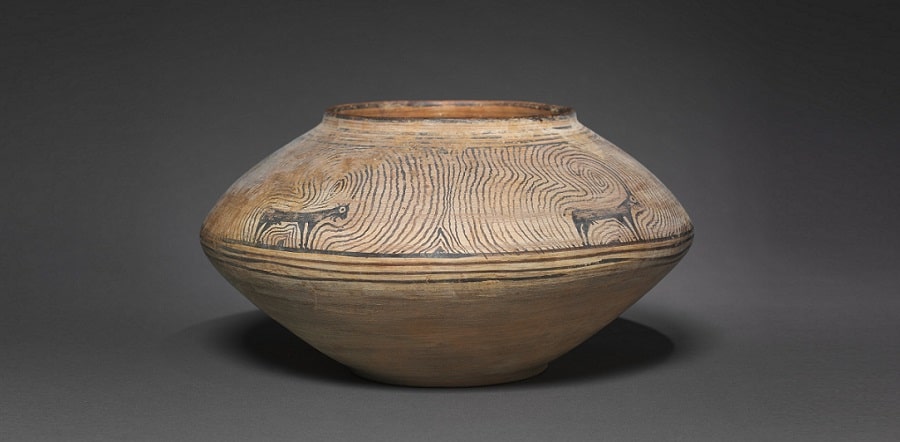
>>>>>>
Amri
- Modern location – Dadu District, Sindh
- River banks – Indus River
- Amri was first visited by Alexander Burnes in 1831.
- Major findings
- Remains of Rhinoceros
- Pre-Harappan settlement
- Transitional culture between pre and post-Harappan culture
- Trace of Jhangar culture in Late Harappan
- Fire altars
>>>>>>
Suktagendor
- Modern location – Gwadar, Baluchistan
- River banks – Dasht River
- Discovered by Edward Mockler in 1875
- Westernmost site of Indus Valley Civilization
- Major findings
- Ash filled pot
- Copper axe, flint blades without cores
- Originally a port but later cut off from sea due to coastal uplift
- Had trade links with Babylon
>>>>>>
Balakot
- Modern location – Lasbela, Balochistan
- River banks –
- Discovered by
- Major findings
- Earliest evidence of furnace
- Seaport
>>>>>>
>>>>>>
Indus Valley Sites in Afghanistan
Shortugai
- Modern location – Takhar, Afghanistan
- River banks – Amu Darya river
- Major findings
- Indus Valley Civilization trading colony
- Established around 2000 BC
- Lapis lazuli mines
- Camel trade
- Ploughed field & flax seeds – Dry land farming
- Canal irrigation system
>>>>>>
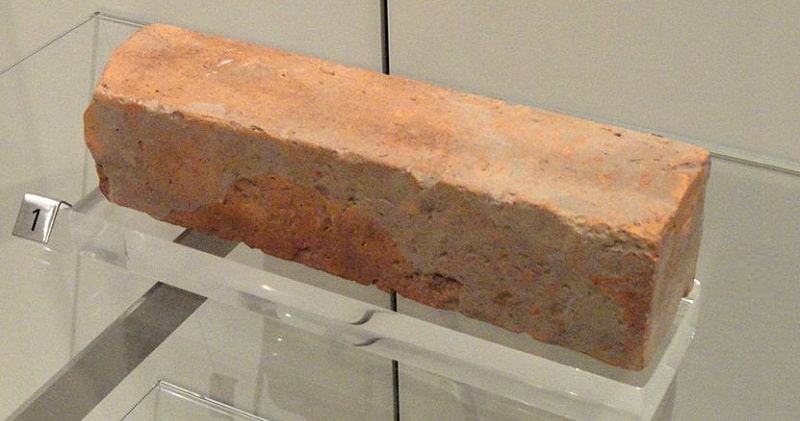
>>>>>>
Town Planning
- Harappan civilization is known for its urban outlook and sophisticated sense of city planning.
- In most of the Harappan city was divided into two parts
- Citadel / Raised Part
- This part occupied a smaller area.
- Frequently situated to the west of the city.
- Rulers of the city lived here.
- It contained public buildings, granaries, and important workshops.
- Lower Part
- The common citizens lived and carried on their professional lives here.
- Citadel / Raised Part
- City planning roughly followed a grid pattern.
- Streets ran from north and cut at right angles.
- The streets were wide, the main street being 10 meters wide.
- Streets divide the town into rectangular and square blocks.
- There were lamp-posts at intervals.
- Bricks were burnt and identical ratio of 1:2:4 in terms of thickness : width : length.
- Uniformity in the average size of bricks
- 7 × 14 × 28 cm for houses
- 10 × 20 × 40 cm for city walls
- Drains were made of mortar, lime and gypsum.
- Drains were covered with large brick slabs for easy cleaning.
- Houses were often of two or more storeys, though varied in size but quite monotonous.
- No window faced the streets.
- Houses had tiled bathrooms.
- Some houses had their own wells.
>>>>>>
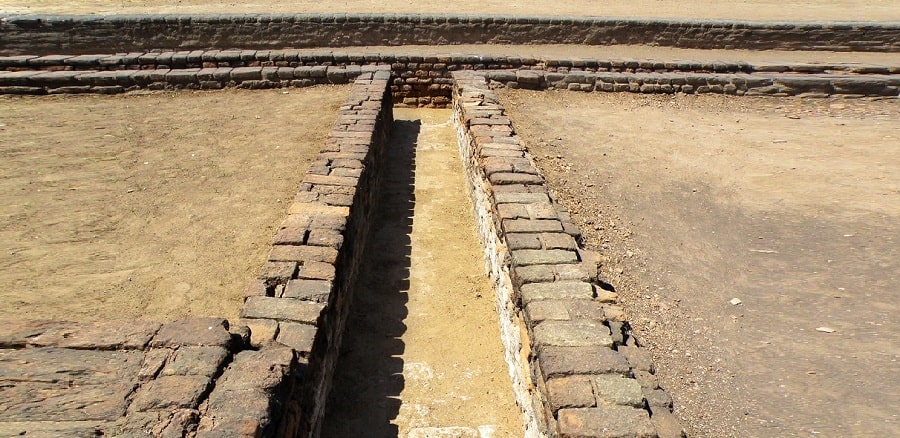
>>>>>>
Society
- The Indus Valley society was an urban society.
- Most of the people were middle classes.
- According to excavation, we can divide three social groups
- Ruler class
- Rich merchants
- Labour class lived in the lower part of the city
- The Harappa civilization people were experts in the use of the potter’s wheel.
- They were poor in artistic works of stone.
- Redware pottery painted with black designs was popular.
- Pots were used for storing grain, and water or used for brewing fermented alcoholic beverages.
- A lot of terracotta has been found at many sites.
- More female figurines have been uncovered then male figurines.
- The Harappan people refined the art of bead-making, and jewellery of gold and silver.
- At Allahdino a lot of necklaces made of gold, silver and stones have been found.
>>>>>>
>>>>>>
Economy of Indus Valley Civilization
- Indus valley people had a good trade relations with Mesopotamian and Persian civilizations.
- The Mesopotamians called the Indus Region ‘Meluhha’.
- The Mesopotamian texts speak of three intermediate trading stations called
- Dilmun – Bahrain on Persian Gulf
- Makan – Makran coast, Oman
- Meluhha
- Every merchant probably had a seal bearing an emblem with brief description on one side.
- Standard Harappan seal was a square / oblong plaque made of steatite stone.
- Purpose of the seal was to mark the ownership of property.
- Key aspects of trade and economy are as follows:
- They carried out internal and external trade.
- There was barter trade, no metallic money was in circulation.
- Inland transport used bullock carts.
- There were bead-making factories at Chanhudaro and Lothal.
- There was a dockyard in Lothal and sea ports at Rangpur, Somnath and Balakot.
- Weights and measures of Indus valley civilization was standardized and accurate.
- Weights followed a binary and decimal system.
- Chert, limestone, and steatite were used to make weights.
- Weights were cubical in shape.
- Measures of length were based on the foot and the cubit.
>>>>>>
Agriculture
- 1st evidence of cotton in the world is found in Mehrgarh.
- It was known as ‘Sindon’ by the Greeks as from Sindh.
- People sowed seeds in the flood plains in November, and reaped their harvests of wheat and barley in April, before the advent of the next flood.
- They ploughed fields with the help of wooden ploughs.
- They produced sufficient food grains to feed themselves and the surplus was stored in granaries.
- The Harappan people grew wheat, barley, horse gram, peas, melon, watermelon, sesame, dates, millets, grapes, henna, garlic, mustard, rice.
- Double cropping was started by Harappan people.
- Wheat and barley – winter crops.
- Rice, millets, and sorghum – summer crops.
- They also exploited riverine and marine resources wherever possible.
- They domesticated cattle, goats, humped bulls, sheep, pigs, asses, camels, cats and dogs.
- Horse wasn’t in use.
- Indus valley people were well acquainted with the elephant and the rhinoceros.
- Tigers were often represented in figurines but leopards were rare.
>>>>>>
Mining
- Copper – Khetri, Baluchistan
- Lapis lazuli – Shortugai
- Turquoise – Khorasan
- Bitumin – Baluchistan
- Iron was unknown to the Indus people.
>>>>>>
Imports & Exports
- Imports
- Gold – Afghanistan, Iran, Kolar.
- Tin – Afghanistan, Iran.
- Jade – Pamir
- Steatite – Tapi Chahya (Iran)
- Bitumin – Mesopotamia.
- Lead – South India.
- Exports
- Agricultural products
- Cotton goods
- Terracotta figurines, pottery
- Beads, conch- shell, ivory products
- Copper
>>>>>>
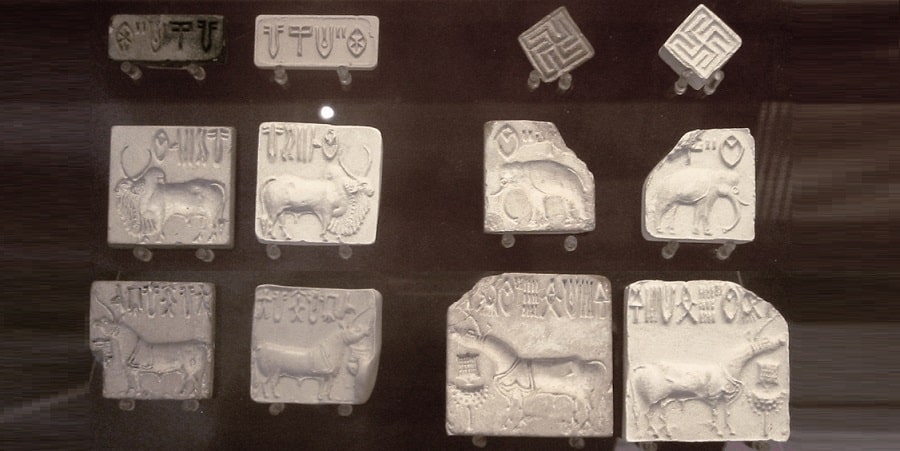
>>>>>>
Religion of Indus Valley Civilization
- Indus Valley civilization is considered a secular society.
- No structure of the temple has been found.
- People generally worshipped:
- Mother goddess
- Pashupati Mahadeva or proto-Shiva
- Lingam (phallus) and Yoni worship (cult of fertility)
- Pipal tree
- Humped Bull
- Birds (dove and pigeon)
- One-horned unicorn (may in fact be the rhinoceros)
- Dead bodies were placed in a north-south direction.
- They generally accompanied food, pottery, ornaments, and tools with dead bodies.
>>>>>>
>>>>>>
Causes of the Decline
- Archaeologists now believe that the civilization did not come to an abrupt end but gradually declined.
- People moved eastwards and cities were abandoned.
- Different theories are given by archaeologists
- Aryan Invasion – Mortimer Wheeler, Gordon
- Ecological disturbance – Fairchild
- Change in River course – Lambrick, Dales
- Low Rainfall – Stein
- Flood – Macay, S.R. Rao
- Drying of Ghaghar and Increasing Aridity – D.P. Aggarwal, Sood
- Earthquake – Raikes and Dales
- Natural Calamities – K.A.R. Kennedy
- Other causes cited include deforestation and climate change.
- The Aryan invasion theory has now been debunked.
- It is possible that some cities were destroyed by floods but not all.
- New cities emerged only about 1400 years later.
- The Indus Valley people continued to evolve even in the face of declining monsoons.
- People shifted their crop patterns from large-grained cereals to drought-resistant species.
- The organised large storage system of the mature Harappan period collapsed for the lower yield.
- More individual household-based crop processing and storage systems evolved.
- This was the main reason for the deurbanisation of the civilization.
